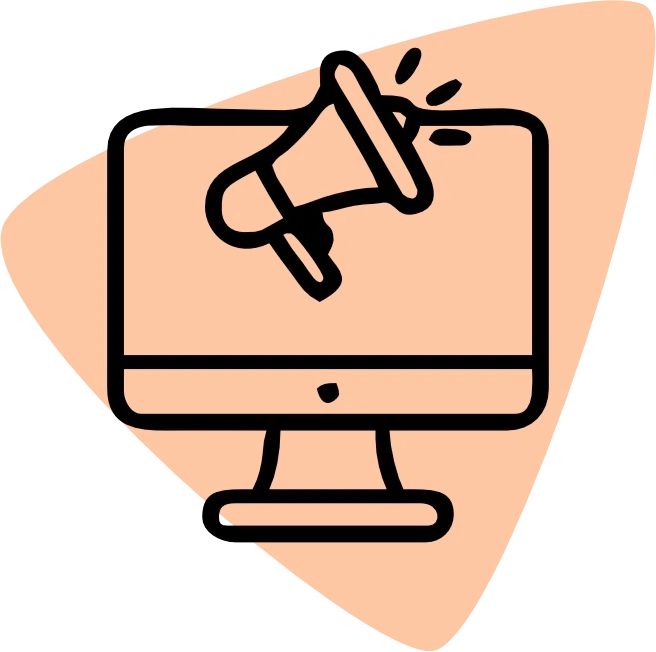Elevate Your Brand
Elevating Brands and Expanding Horizons

Elevating Brands and Expanding Horizons

Tired of feeling frustrated with your marketing efforts? Fresh Horizons has the solution with our 3 core tools: Digital Marketing, Custom Apparel, and Promotional Products. Say goodbye to frustration and hello to success with Fresh Horizons.

Get results that matter with our powerful marketing tools. From CRM and websites to sales funnels, missed call text back, and email campaigns - we've got you covered. Elevate your business today!

Elevate your brand and team spirit with custom apparel. Impress clients, instill pride in employees, and stand out from the competition. Let us help you make a lasting impression.

Promote with ease and confidence! Our access to over 1 million promotional products ensures you'll find the perfect fit for your brand, no matter the occasion. Let us help you create lasting recognition today.

Revolutionize Your Marketing with Our Powerful Technology.
Is it time to take your marketing game to new heights? Fresh Horizons Group has got you covered with a suite of powerful tools that will make your competitors green with envy. From stunning websites and killer sales funnels to email campaigns that pack a punch, we've got all the tricks up our sleeve to generate leads, boost conversions, and keep your customers coming back for more. Say hello to success!
Ready to skyrocket your business like never before? With Fresh Horizons Group, you're not just getting snazzy websites and killer sales funnels - you're investing in a future of unstoppable growth. We'll help you magnetize new customers, make your competitors eat your digital dust, and turn your one-time buyers into die-hard fans. So strap in, and let's ride the wave to success together!
Discover a treasure trove of business and marketing insights on Fresh Horizons Group's blog.
From captivating articles to expert advice, unlock the secrets to success and stay ahead of the competition. Join the conversation today!

Efficient operations are the backbone of a small business’s ability to scale profitably, reduce waste, and deliver consistent customer value. This checklist-driven guide teaches practical steps, tools, and measurement frameworks so owners and managers can prioritize improvements across finance, IT, HR, sales and marketing, and core workflows. By defining what “operations optimization” entails, explaining how business solutions deliver time and cost savings, and mapping clear next steps, this article gives a usable road map for immediate impact. You will learn how to tighten cash flow, choose accounting and payroll tools, secure cloud and endpoint environments, streamline hiring and onboarding, deploy CRM and marketingautomation, and map SOPs for repeatable outcomes. Each section includes actionable checklists, comparison tables, and decision criteria that align with business solutions for small businesses, IT solutions for small business, and small businessaccountingautomation. Read on to follow a structured checklist that turns strategic priorities into measurable operational gains, and use the included tables and lists to select tools that match your size, budget, and growth stage.
Small business owner leveraging AI tools to streamline daily operations in a modern workspace.
In today’s fast-changing business world, artificial intelligence isn’t just the future—it’s the new foundation of success. For small business owners, AI is the difference between managing operations and mastering them. From finance to marketing to customer experience, AI tools now help businesseswork smarter, faster, and with greater precision than ever before.
This comprehensive checklist from Robert Ewald, Founder of Fresh Horizons Group, reveals the AI-driven strategies that are transforming small business operations in 2025. With over two decades of experience helping businesses grow through digital systems and automation, Robert shares practical, tested solutions that save time, reduce costs, and create measurable results.
Operations optimization covers the main functional domains that determine a small business’s capacity to deliver products or services reliably, profitably, and at scale. The mechanism is aligning processes, technology, and people so work flows with minimal friction, which yields faster cycle times, lower operating costs, and better customer experiences. The primary benefit is predictable, repeatable performance that supports growth and resilience. Below are core pillars to focus improvement efforts and why each matters to your efficiency.
Finance: budgeting, cash flow forecasting, invoicing and payroll accuracy reduce liquidity risk and costs.
IT & Infrastructure: cloud services, collaboration and backups enable remote work and reduce downtime.
HR & Team Management: hiring efficiency, onboarding, and training shorten time-to-productivity.
Sales & Marketing: CRM and automation lower CAC and improve conversion consistency.
Workflow Automation & SOPs: standardized procedures and automation cut manual work and errors.
Customer Support & Compliance: helpdesk systems and legal controls protect reputation and avoid fines.
These pillars guide prioritization and set the stage for selecting specific tools and KPIs in the following sections.
Core business functions directly influence measurable operational KPIs like days sales outstanding (DSO), lead time, employee turnover, and customer response time. Finance controls cash conversion and supplier terms that determine solvency; poor invoicing practices increase DSO and restrict reinvestment. Operations and IT influence production or service throughput through system availability and process design, while HR affects capacity via recruiting speed and retention. Tracking the right KPIs—cash runway, average handle time for support, time-to-hire, conversion rate—provides signal about where to intervene. Linking each KPI to a responsible owner helps turn insight into action and reduces ambiguity when allocating improvement resources.

Small business solutions improve productivity by automating repetitive tasks, centralizing data, and enabling faster collaboration, which together reduce manual overhead and decision latency. For example, automating invoicing and bank reconciliation shortens accounting cycles, reducing DSO and freeing time for strategic finance work. Centralized CRM platforms keep customer context accessible to sales and support, reducing handoff friction and increasing close rates. Implementing collaboration tools and cloud file storage eliminates versioning conflicts and accelerates project delivery. Measuring outcomes—time saved, error rate reduction, revenue per employee—validates investments and supports iterative optimization.
Financial management provides the framework that keeps operations solvent and scalable by enforcing budgeting, forecasting, and automated accounting controls that reduce manual errors. The mechanism is creating predictable cash flow through rolling forecasts and automated receivables workflows, which improves decision-making and allows timely investments in people or technology. The outcome is lower financial risk and clearer capacity to plan growth. Below are tactical approaches and tool comparisons to help you select the right small business financial software and payroll setup.
Before the comparison, consider these budgeting and cashflow tactics:
Create rolling 13-week cash flow forecasts and update them weekly to spot shortfalls.
Implement invoice aging targets and automated reminders to shorten receivables.
Negotiate supplier payment terms and prioritize high-impact payables to smooth outflows.
These tactics reduce liquidity surprises and support stable operations, leading to more predictable supplier and payroll cycles.
Budgeting and cash flow optimization rest on frequent forecasting, scenario planning, and operational levers that speed collections and manage payables. Start with a rolling forecast that projects cash inflows and outflows for the next 13 weeks, updating it weekly and tagging assumptions. Use scenario plans to model best, base, and worst cases and identify trigger points for cost containment. Tighten collections by automating invoicing, offering incentives for early payment, and using clear payment terms. Finally, establish a minimum cash reserve and an approval matrix for discretionary spend to protect runway and maintain supplier relationships.
To choose accounting and payrollsolutions, prioritize invoicing automation, bank reconciliation, payroll integration, and tax-ready reporting that match business complexity and transaction volume. Smaller firms benefit from lightweight cloud accounting that automates reconciliation and integrates payments, while larger SMBs need advanced payroll, multi-entity support, and audit trails. Below is a compact comparison of representative tool categories to align features with your needs.

This comparison helps match solution complexity to business size and process requirements; smaller teams often start with cloud accounting and add payroll integrations as headcount grows.
Essential IT solutions form the technical backbone that enables secure, scalable activity—cloud platforms, collaboration tools, backups, and endpoint protection reduce downtime and support remote work. The mechanism is shifting fixed infrastructure costs to flexible SaaS and cloud OPEX, improving access, redundancy, and integration capabilities that speed workflows. The benefit is lower operational friction, stronger data protection, and easier scaling as the business grows. The following subsections explain cloud advantages and prioritized cybersecurity measures, followed by a compact EAV comparison to guide vendor selection.

Cloud computing benefits small businesses by converting capital expenditures into predictable operating expenses while providing scalable compute, storage, and integrated SaaS services. This shift enables quick provisioning of tools like collaboration suites and CRM without large upfront hardware costs, and it supports remote teams with secure, centralized access to files. Cloud platforms also simplify backup and disaster recovery by using replicated storage and automated snapshots, lowering recovery time objectives. By enabling tight integrations between apps, cloud services reduce manual data entry and streamline workflows, allowing teams to focus on customer-facing work rather than infrastructure maintenance.
Research indicates that cloud computing offers significant advantages for small businesses, including cost reduction, improved capabilities, and enhanced scalability.
Perceived Business Benefits of Cloud Computing: Cost Reduction, Capability, and Scalability The benefit of cloud computing measured in the study were: cost reduction, improved capability and enhanced scalability. The results show that the perceived benefit of cloud computing varies depending on the type of cloud computing, the value chain activity where cloud computing is deployed, and the business size. Also, businesses benefit more in enhanced scalability than in cost reduction and increased business capability. After adopting cloud computing, businesses gain more capability in support activities than in primary activities. The perceived business benefit of cloud computing: An exploratory study, TT Chuang, 2016
Effective cybersecurity for SMBs focuses on prioritized, high-impact controls that protect critical data without excessive complexity. Implement multi-factor authentication for all accounts to prevent credential-based breaches, enforce managed backups with regular restore tests to ensure recoverability, and deploy endpoint protection and timely patching to reduce exploit risk. Use role-based access control and least-privilege principles to minimize exposure, and prepare a simple incident response plan that defines notification steps and recovery roles. For many SMBs, a combination of managed security services and basic insurance coverage provides practical risk transfer and operational support when threats arise.

This table clarifies which IT categories deliver specific operational benefits and which situations justify managed services for reliable protection.
Human resources and team management convert strategic objectives into day-to-day capacity through hiring, onboarding, and development systems that reduce ramp time and turnover. The mechanism is codifying role expectations and performance criteria, then automating administrative tasks so managers can focus on growth and retention. The benefit is steady productivity gains, lower hiring costs, and clearer development paths that sustain operational performance. The subsections below outline best hiring and onboarding practices and how engagement and training produce measurable productivity improvements.
Best practices for hiring and onboarding center on clarity of role requirements, streamlined selection, and an automated onboarding sequence that accelerates time-to-productivity. Define competencies and outcomes for each role, use structured interviews and scorecards to reduce bias, and automate document collection and benefits enrollment to remove administrative delays. Create a 30-60-90 day onboarding plan that includes early performance milestones and assigned mentors to support alignment. These steps lower time-to-first-contribution metrics and improve retention by setting clear expectations from day one.
Employee engagement and training increase productivity by raising skill levels and reducing churn, which stabilizes institutional knowledge and improves throughput. Implement continuous microlearning and regular feedback loops rather than one-off training to reinforce skills and measure learning outcomes with performance KPIs. Track metrics such as voluntary turnover rate, training completion rates, and productivity per full-time equivalent to quantify ROI. Low-cost platforms and internal peer-led sessions can scale learning affordably while boosting morale and ownership, feeding back into operational reliability.
Sales and marketing strategies that focus on automation, targeted acquisition, and CRM-driven handoffs reduce customer acquisition cost and increase lifetime value. The mechanism is integrating lead capture, nurturing, and analytics so marketing-generated leads become sales-ready opportunities with minimal manual work. The outcome is more predictable pipeline velocity and higher conversion rates with less time spent on administrative tasks. Below are tactical approaches, a compact EAV comparison between CRM and marketingautomation toolsets, and a checklist for aligning metrics like CAC and LTV.
Centralize customerdata in a single CRM to avoid fragmented records and duplicative outreach.
Use simple marketingautomation to trigger nurture sequences and score leads automatically.
Align sales and marketing KPIs—CAC, LTV, conversion rate—to prioritize channels that scale profitably.
These tactics reduce friction across the acquisition funnel and make performance more measurable and repeatable.
Digital marketing and CRM synergy enhances customer acquisition by pairing targeted outreach with automated follow-up that converts leads faster and more consistently. Capture leads via optimized landing pages and forms, then automatically feed them into a CRM where segmentation and lead-scoring determine the right nurture path. Automated email sequences and task assignments ensure timely follow-ups, and integrated analytics attribute conversions to specific campaigns. This coordinated approach improves conversion metrics and lowers cost per acquisition through better personalization and faster sales response times.
The integration of automationtechnology in digital marketing is a key driver for enhancing efficiency and optimizing operations for small businesses.
AutomationTechnology for Small Business Digital MarketingEfficiency The rapid advancement of automationtechnology has significantly impacted digital marketing strategies, particularly for small businesses aiming to enhance efficiency and optimize operations. This study explores the implementation of automation tools in digital marketing efforts, focusing on their potential to streamline processes, improve customer engagement, and increase overall marketing effectiveness for small businesses. Automation technologies, such as customer relationship management (CRM) systems, email marketingautomation, and social media management tools, allow small enterprises to reach their target audience more effectively while saving time and resources. Implementation of AutomationTechnology in Enhancing Digital MarketingEfficiency for Small Businesses, 2025
Marketing automation tools streamline sales by automating lead qualification, email workflows, and handoff triggers that reduce manual coordination between teams. Core features to look for include visual workflow builders, lead scoring, behavioral triggers, and native CRM integrations to maintain a single source of truth. Starter tools work well for basic email nurturing and segmentation, while more advanced systems add predictive scoring and multi-channel orchestration for growing SMBs. When choosing, prioritize integration capability and ease of use so small teams can deploy automation quickly and measure its impact on pipeline velocity.

This table clarifies how different platform types contribute distinct benefits and why integration between them is critical for efficiency.
Workflow automation and process standardization improve operations by removing manual steps, ensuring consistency, and enabling scale without proportionally increasing headcount. The mechanism is mapping end-to-end processes, identifying repetitive tasks, and applying automation or scripts to handle routine work while SOPs capture decision points. The result is faster throughput, fewer errors, and clearer ownership across teams. Below are methods to develop SOPs, prioritize automation candidates, and a short ROI example to justify automation investments.
Effective SOP development uses a simple template and a collaborative process that captures who does what, when, and how, then enforces review cycles for continuous improvement. Use a template with purpose, scope, step-by-step instructions, owner, and KPIs to make each SOP actionable and auditable. Assign a document owner responsible for version control and schedule quarterly reviews to keep procedures aligned with changing tools and compliance needs. Store SOPs in a searchable central repository with access controls so staff can find and follow procedures quickly, reducing onboarding time and operational errors.
Step 1: Map the process end-to-end and identify decision points.
Step 2: Draft step-by-step tasks with responsible owners and timing.
Step 3: Pilot the SOP with a small team, capture feedback, then finalize.
These steps create living documents that support consistency and make future automation easier to implement.
Automation reduces manual tasks by executing repeatable actions—such as invoicing, lead routing, or payroll triggers—so staff focus on higher-value work like customer relationships and strategic planning. Prioritize automation candidates using an impact vs. effort matrix: choose high-impact, low-effort tasks first to build momentum. A simple ROI example: if an automation saves 10 hours per month at an average loaded hourly rate of $40, the monthly labor savings are $400, or $4,800 annually, which often exceeds the cost of small automation tools. Monitor automations for exceptions and maintain logs to ensure reliability and continuous improvement.
Automation Candidate
Business Rule
Expected Benefit
Invoice generation
Trigger on paid milestones
Reduce billing time and errors
Lead routing
Score-based assignment
Faster sales response, higher conversion
Payroll reconciliation
Automated feed + rules
Fewer manual corrections, compliance consistency
This table shows practical automations and their expected impacts, helping teams prioritize quick wins that deliver measurable efficiency gains.
Imagine reducing admin time by 50% while improving accuracy and consistency. That’s what small business AI solutions deliver every day.
AI tools can now:
Automate accounting, bank reconciliation, and expense tracking
Run predictive analytics to identify cost-saving opportunities
Personalize your marketing in real-time based on customer behavior
Streamline team communication and project delivery
The result? Fewer errors, faster decisions, and more mental space to focus on growth. When you adopt AI into your operations, you’re not just upgrading software—you’re upgrading how your business thinks, acts, and scales.
Robert Ewald is the Founder and President of Fresh Horizons Group, a digital growth and automation agency that helps small businesses leverage AI, systems, and smart marketing to scale efficiently. With over 20 years of experience in operations, automation, and brand strategy, Robert’s mission is to make advanced technologyaccessible, practical, and profitable for entrepreneurs. His insights have empowered hundreds of small business owners to work smarter—not harder—and to grow with confidence in the AI era.
Follow Fresh Horizons Group for more AI-driven insights and business growth strategies.
Get a FREE MARKETING audit for your business.
Get a FREE MARKETING audit for your business.
